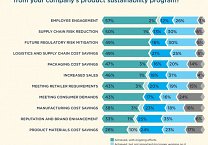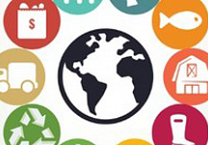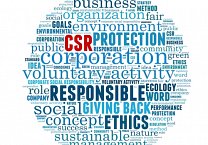What Do the New G4 Sustainability Reporting Guidelines Mean for Mid-sized and Smaller Companies?
by Tara Gallagher
02 July 2013
Have you been dreading what you might find in the new G4 sustainability reporting guidelines? Smaller and mid-sized companies, take heart. There is (mostly) good news. There are also some tasks you should begin right now.
 If you’ve kept half an eye on the blogosphere, the information about the Global Reporting Initiative’s (GRI) new G4 framework might sound daunting. But G4 is not the barrier to smaller company reports that you might have feared. GRI has replaced the old A, B and C designations with “Core” and “Comprehensive” levels. In most respects, the Core requirements will be easier for smaller companies to report against than the old C requirements were. For the Specific Standard Disclosures, Core reporters need only report on one indicator for each topic, such as water, that they consider material to their business. Sounds doable, right?
If you’ve kept half an eye on the blogosphere, the information about the Global Reporting Initiative’s (GRI) new G4 framework might sound daunting. But G4 is not the barrier to smaller company reports that you might have feared. GRI has replaced the old A, B and C designations with “Core” and “Comprehensive” levels. In most respects, the Core requirements will be easier for smaller companies to report against than the old C requirements were. For the Specific Standard Disclosures, Core reporters need only report on one indicator for each topic, such as water, that they consider material to their business. Sounds doable, right?
Deciding What Matters Most
The process of determining what is material is where the guidelines have changed the most dramatically. Companies must decide what topics are most relevant to their businesses and report on these. This greater emphasis on reporting on what matters most certainly makes sense. But with this greater freedom, comes a much greater responsibility for both companies and their stakeholders to ensure that the list of identified material issues is appropriate.
In this new era of G4, much of the hard work occurs at this preparatory stage, which should lead to a greater integration of reporting efforts into business strategies. GRI treats Core and Comprehensive reporters the same in terms of defining material issues and engaging stakeholders. Before any smaller companies panic at the thought of being treated the same as multinational corporations, let me walk you through the requirements.
Engaging Stakeholders
It is a straightforward process. You identify a list of environmental, social and economic topics that are important to your company, and then prioritize these based on their effect on your business and your stakeholders. Then you determine a cut-off threshold. Items below this do not need to be covered in the report (you’ve probably seen the 2x2 graphs of issues in many CSR reports). You’re almost there. Next you validate this list of issues with your stakeholders and your company’s management. There is also a post-publication review phase we won’t get into here.
The previous GRI guidelines had similar requirements but did not emphasize disclosing the materiality determination process. Many companies cut corners in this area and lacked a structured materiality and stakeholder engagement process. For some, conversations with stakeholders have been more perfunctory than helpful and have often led nowhere. This new emphasis on seeking diverse perspectives in a defined process of identifying priorities should infuse new life into stakeholder relationships.
But what if you are a company that has never done much in the way of stakeholder engagement? Then it is time to get started. Build relationships with your customers, suppliers, and employees, as well as interested local community groups or NGOs. Don’t overcomplicate the process but find an approach that works for you and leads to a helpful evaluation of your priorities. Don’t just do it to say you’ve done it. The goal here is to establish a process that gives you confidence that all aspects that are material to your business and stakeholders are addressed, while also balancing your organization’s size, scope and resources.
The Bottom Line
Beginning in 2016, all reports must follow the new G4 framework. Before then, it’s your choice. I admit that I was not a fan of the new framework at first, and I saw some big problems in the G4 draft. After spending more time with the final guidelines, I’m optimistic (and relieved!) that G4 should make the reporting process more meaningful and help advance business responsibility.
Should you use G4 now? While it’s always easier to follow a well-trod path, early adopters will demonstrate leadership. That’s a good thing. I applaud the companies that are rising to this challenge.
Download the free Guidelines here.
Written by Tara Gallagher
Tara Gallagher, a Senior Advisor at Pure Strategies, specializes in developing and communicating sustainability strategies. An expert in CSR reporting, she wrote the award-winning 2007 and 2008 Seventh Generation Corporate Responsibility Reports as well as the company's 2009 - 2014 reports. Tara has also developed CSR reports and/or other CSR communications for The North Face, EMD Millipore, and numerous other companies. A recipient of the GRI-G4-certified training on the GRI sustainability reporting process, Tara has facilitated materiality assessments for several clients.












